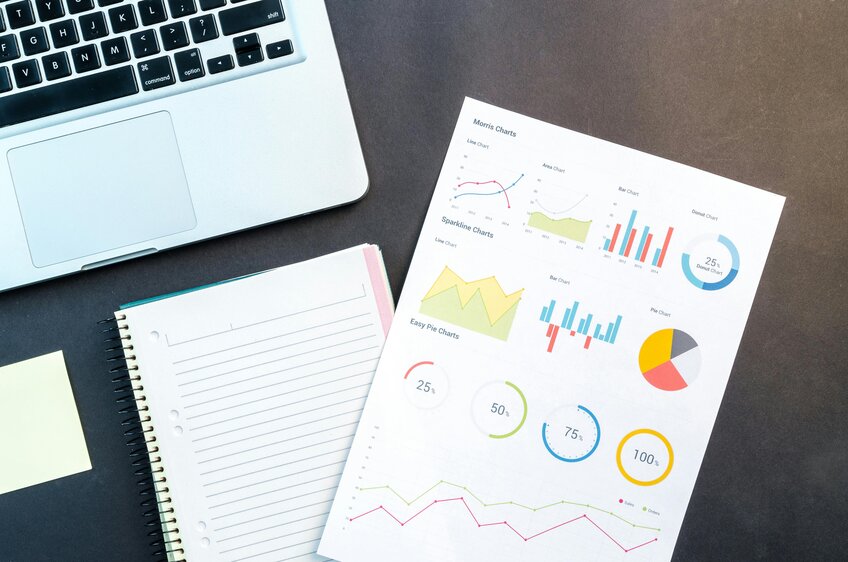July 3rd, 2025
Transform Data into Clear Visuals with No-Code Software
By Simon Avila · 4 min read

Data visualization encompasses the tools and techniques used for visually representing data to identify patterns, trends, and insights.
In an era where the global volume of data is projected to continue growing rapidly, the ability to quickly and effectively understand this information is paramount. This surge in data underscores the critical need for advanced visualization solutions, particularly easy data visualization software that empowers users without extensive technical backgrounds [1], [2].
The Rise of No-Code: Democratizing Data Insights
No-code data visualization platforms are revolutionizing how individuals and organizations interact with data. These tools are designed for ease of use, enabling non-technical users to generate clear, compelling visuals from complex datasets without needing any coding expertise [1].
The primary advantage lies in their ability to democratize data analysis, making sophisticated visualization capabilities accessible to a broader audience. Users can create interactive and dynamic visualizations rapidly, often through intuitive drag-and-drop interfaces [1], [3].
Hallmarks of Effective Easy Data Visualization Software
Modern data visualization software is characterized by several key features that enhance usability and analytical power:
• AI-Powered Insights: Many tools now incorporate artificial intelligence to provide automated insights, identify hidden patterns, and even offer predictive analytics [1], [2].
• Interactivity: Features like tooltips, filtering, and drill-downs allow users to engage with the data dynamically, fostering deeper understanding and exploration [2].• Real-Time Data Integration: The ability to connect to live data sources ensures that visualizations remain current, reflecting the latest information [1].
• Diverse Visualization Techniques: A comprehensive suite of chart types—such as histograms, bar charts, line graphs, scatter plots, heatmaps, choropleth maps, and word clouds—enables users to choose the most effective representation for their data [2].
Navigating the Landscape of No-Code Visualization Tools
The Conversational AI Frontier: Julius AI
A standout in the realm of easy data visualization software is Julius AI. This AI-powered data analysis platform enables users to analyze, visualize, and manipulate data through a conversational interface.
With Julius, users can upload files, generate graphs and charts, clean and merge datasets, and receive insights using plain English commands. This approach lowers the barrier to entry, allowing knowledge workers and data scientists to produce visuals from complex data without programming knowledge. Julius AI exemplifies the trend toward more intuitive and accessible data tools.
Long-Time Industry Platforms
• Tableau: A leading no-code data visualization and business intelligence platform, Tableau allows users to build interactive visualizations by simply dragging and dropping data fields [1], [2].
• Microsoft Power BI and Google Data Studio: These tools enable users to create interactive dashboards and reports quickly, often featuring real-time data integration and robust sharing capabilities [1].
Agile Web-Based Solutions
• Plotly Chart Studio and RawGraphs: Both are browser-based platforms that support a wide array of chart types and custom visualizations, making them accessible for users without programming knowledge [3].
• Datawrapper: Recognized for its user-friendly online interface, Datawrapper guides users through data upload, transformation, and visualization creation. It includes accessibility features like a colorblindness checker and offers step-by-step guidance, suitable for beginners and professionals [3].
Foundational Principles for Impactful Visualizations
Effective data visualization is crucial in academic research and business for translating complex datasets into understandable and actionable insights [2]. To ensure visuals are impactful, tools should adhere to several key principles, like:
• Data Integrity: Visualizations must accurately represent the underlying data.
• Clarity: The visual should be easy to interpret, avoiding clutter and ambiguity.• Context: Provide sufficient context to make the data meaningful for the intended audience.
• Interactivity: Where appropriate, allow users to explore the data, enhancing engagement and discovery [2].
Looking Ahead atthe Evolving Horizon of Data Visualization
The field of data visualization continues to evolve, driven by technological advancements and user needs. Key trends shaping its future include:
• AI-Driven Storytelling: Tools are increasingly capable of generating narratives from data, helping to communicate findings more effectively [1].
• Immersive and Interactive Designs: Expect more augmented reality (AR) and virtual reality (VR) applications, along with highly interactive web-based designs, to create more engaging data experiences [1].• Integration of Machine Learning: ML algorithms will further automate insight discovery and enhance predictive capabilities within visualization tools [1].
• Continued Democratization: The rise of no-code and low-code platforms will continue to empower a broader range of users to leverage data for strategic advantage [1].
Final Thoughts
No-code data visualization software is transforming the way we access, interpret, and communicate data-driven insights. By offering intuitive interfaces and powerful analytical capabilities, these tools empower individuals across all skill levels to turn raw data into clear, actionable visuals.
As data continues to grow in volume and complexity, the demand for easy data visualization software that simplifies this process will only intensify, making data literacy and visual communication essential skills in the modern world. Fortunately for you and your organization, Julius AI is here to transform the way you approach data visualization. Try it for free today to learn more.
